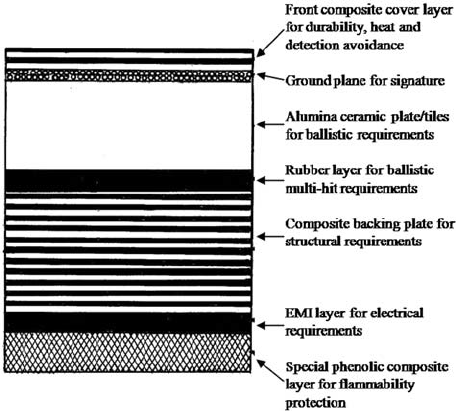Tank Defenses
Home
What do I mean?
Tanks are
often thought of being these invincible death
machines but in reality they are vulnerable to
enemy fire just as much as the enemy is
vulnerable to their firepower. As a way to help
the tank and crew stay alive, a number of
features have been implemented to bolster the
tank's armor and protect the crew in case of a
penetrating hit. The most common additions are
composite armor, meaning that the tank's armor
is made of a variety of materials and not just
steel. Explosive reactive armor (ERA) is a
shaped charge that explodes when hit. And then
if these two fail to stop the round, tanks have
blow out panels which direct the explosive force
of an ammunition explosion out of the
tank. Pictured below is an M60 Patton
equipped with ERA. The ERA are those panels
added onto the turret and hull of the
tank.
image
source:http://olive-drab.com/images/id_m60_375.jpg
The Physics
Most of
today's modern tanks are equipped with
composite armor which is generally made out of
a mix of materials often ceramic or depleted
uranium. This mix makes the armor stronger and
better able to absorb quick impulses of
kinetic energy because materials like ceramic
are very hard. Ceramic and steel composite
armor is made of ceramic plates with steel
woven into it, the steel takes the flexing of
an impact while the ceramic takes the force of
the impact because it can absorb more kinetic
energy. Below is a cross section of ceramic
composite armor.
 Image
source:https://www.researchgate.net/profile/Niranjan_Naik/publication/258140536/figure/fig1/AS:297549710807040@1447952787153/Figure-1-Cross-section-of-a-typical-ceramic-composite-armor.png
Image
source:https://www.researchgate.net/profile/Niranjan_Naik/publication/258140536/figure/fig1/AS:297549710807040@1447952787153/Figure-1-Cross-section-of-a-typical-ceramic-composite-armor.png
Explosive
reactive armor is basically a shaped charge
between two metal plates attached to the
tanks hull that, once hit, detonates and
sends the two plates in opposite directions.
The plate that is hit is sent towards the
projectile which causes damage to it so that
it is less effective at penetrating the
armor beneath the ERA. This then either
reduces the amount of kinetic energy a round
like APFSDS has or deforms the cone on
rounds like HEAT making it less effective.
Pictured below shows a HEAT round hitting an
ERA plate. In fig 2 you can see the plate go
towards the HEAT round and disrupt the angle
at which the molten copper hits the armor
below.
 Image
source:https://4.bp.blogspot.com/-ktfJ03_2pmk/VyJpsOFOJRI/AAAAAAAAAGQ/TnL6gz0VjiU1omBiF0fFpFCovqUa-ifjQCLcB/s1600/eraheld.png
Image
source:https://4.bp.blogspot.com/-ktfJ03_2pmk/VyJpsOFOJRI/AAAAAAAAAGQ/TnL6gz0VjiU1omBiF0fFpFCovqUa-ifjQCLcB/s1600/eraheld.png
In the event that a round penetrates the
armor of the tank and hits the ammo
compartment, there are a series of
panels that explode out to direct the
force of the ammunition explosion up and
out of the tank. This not only protects
the crew of the tank, but also helps to
prevent the tank from being completely
destroyed. Below is a rough sketch I
made to help illustrate this idea. As
you can see, these panels don't reduce
the force, they merely direct the force.
|